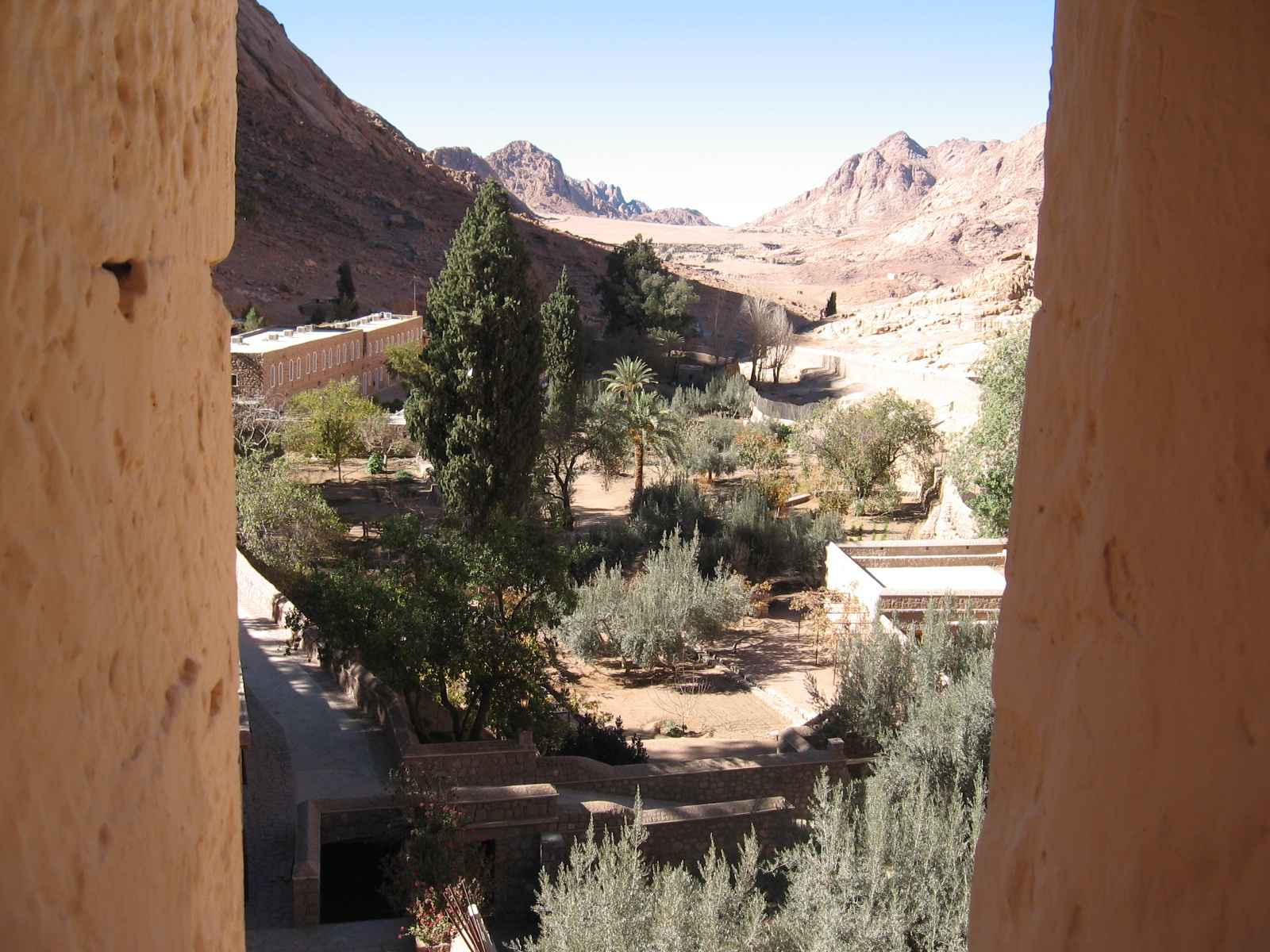SURROUNDING AREA

The area adjoining the fortress walls includes the monastery garden, which to this day is used to grow fruits and vegetables for the sustenance of the monks. The cultivation of such an extensive garden in this arid and hostile climate is a witness to the dedication and labour of the monks. Water drawn up from the ground is held in cisterns, from where it is distributed to the trees and plants.
The Chapel of Saint Tryphon
The garden is dominated by the Chapel of Saint Tryphon, patron saint of gardens. The Chapel occupies the upper storey of the structure standing in the midst of the monastery garden. It was constructed in 1888, and is distinguished by its simplicity and neoclassical profile. The masonry is crowned by a horizontal cornice and parapet, while the western and eastern ends are adorned by decorative gables in the form of inverted keels. Saint Tryphon is the patron saint of gardens, and on his feast day every year, February 1, a priest blesses holy water and reads the Prayer of Saint Tryphon, which invokes the protection and blessing of God upon the garden for the coming year.
The Ossuary
The Ossuary occupies the ground floor beneath the Chapel of Saint Tryphon. Outside are the six graves of the cemetery, where monks are buried in the ground in their monastic habit, and a simple cross marks each grave. When a member of the community passes away, the bones that have been in the cemetery the longest are taken up to clear the grave for another burial. When bones have been disinterred from the cemetery, they are placed in the ossuary in an orderly manner. Memorial services are regularly held in the ossuary, commemorating those who have gone before to their rest. It is edifying to recall that our life here has its appointed end. It is also important to remember that these are the bones of those who have fallen asleep, and who lie here awaiting the Resurrection and the Second Coming of Christ.
A wooden case preserves the body of the Righteous Stephanus, whose body has not decomposed, and who is still seated within the case. This ascetic once lived at the gate below the entrance to the summit of Mount Sinai, and heard confessions, so that those who made the ascent would be cleansed, and spiritually prepared to ascend to the holy summit. He is mentioned by Saint John Climacus. His memory is celebrated on the feast of All Saints of Sinai.
The Kyrillou Complex
Outside the monastery entrance is a building referred to as the Kyrillou. This was constructed in 1859 at the time of Archbishop Cyril Byzantios, and hence its designation as the Kyrillou. This is a simple classicist edifice made of hewn limestone blocks. It serves as a residence for women visitors to the monastery, and in particular, to visiting nuns, allowing them to attend services inside the monastery.
The Medical Clinic
The remoteness of Sinai meant that those who fell ill there could not simply leave the area. From earliest times, there were facilities for the care of the sick, and a number of the chapels in the area are dedicated to the saints who are invoked in times of illness, such as Saint Panteleimon, Saint Antipas, and Saints Cosmas and Damian. In the sixth century, Pope Gregory the Great of Rome sent an offering of blankets for use in the monastery’s care of the sick. In more recent times, a clinic existed inside the monastery, and bedouin resorted to the clinic when in need of medical help. A few years ago, an expanded clinic was established just outside the walls of the monastery. This contains an excellent dental clinic, and an adjoining area for medical diagnoses and simple treatments. A number of doctors from Greece and from other countries come to the Sinai to devote several weeks of their time at the clinic, in their respect for the monastery, and in their concern for the medical needs of the local bedouin. The monastery clinic now works in conjunction with a clinic in the nearby village, where bedouin and visitors can receive first aid. The monastery and the village both have pharmacies where medications are kept on hand.
Other buildings
In more recent times, additional buildings have been constructed to house various monastery workshops, rooms for workers, and a Guest House where pilgrims and visitors can be accommodated.
To the east of the monastery are additional rooms for workers, and two areas of ruins that have only recently been excavated. They are still being studied, but seem to have served as quarters for the soldiers who were sent to build the monastery in the sixth century, and who were commanded to remain at the monastery with their families as its guardians and protectors.




